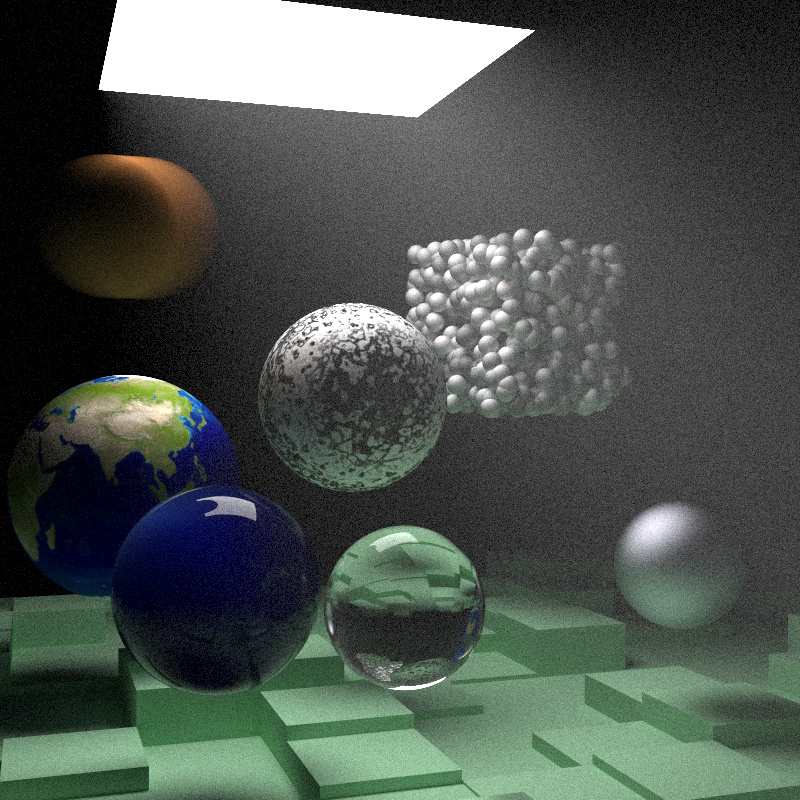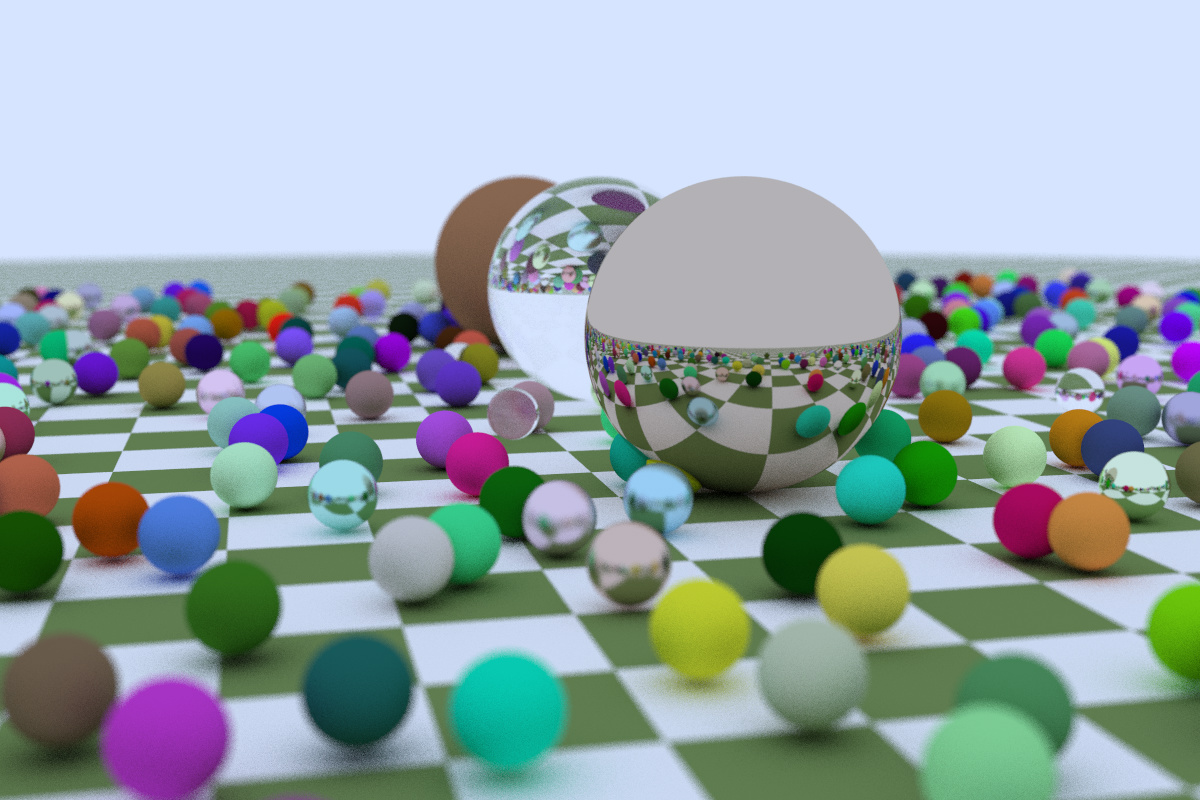Ray Tracing the Next Week
Ray Tracing the Next Week
It has been two weeks since I completed the first series of Peter Shirley’s ray tracing books (see my previous post here). I’ve since embarked on the second series and completed the full featured final scene, which I’ll share in this post. I also fulfilled my promise to release my code to the public, which you can find here. I welcome any questions or suggestions, and I hope this code will be useful to those interested in this fascinating topic.
Learnings from this exercise
There are a few notable learnings that I want to share in this post. The first thing is that debugging CUDA code that has virtual function is really painful. I spent a lot of time trying to figure out why my code was crashing while debugging and finally figured out that it was because I was calling a virtual function from a device function. I had tried many ways to enable debugging of device code, but none of them worked until I removed the virtual function in the base class. This is not particularly appealing to me because Peter Shirley’s implementation relies heavily on virtual functions. Although I could refactor the code to avoid virtual functions, I decided to live with the design for now as it is easier for me to establish a baseline implementation and then refactor it later.
The second thing I learnt is that when and why copy/move contructors and assignment operators are called. It is not always obvious to me and took me quite a while to figure out. The reason I looked into this is because I wanted to avoid double pointers in my code. The use of double pointer (**ptr) can be confusing and for my use case, I just need an array of instances and thought I did not need a double pointer. However, I was wrong. Although I did manage to use a single pointer but it was not without a lot of pain. This is because objects are created uniquely —- I need to use new per object and the fact I new an object, I already created one in the current heap. So when I assign this new object back to the position where the single pointer points to, copy assignment or move assignment is called. I did not gain much by using a pre-allocated space in an array. In this case, using a double pointer actually makes sense, because after I new an object and only need to pass the pointer to this new object to this double pointer (array of pointers), and no copy assignment or move assignment is called. I hope this makes sense. A simple example below hopefully illustrates this point.
A* pre_allocated = A[10];
pre_allocated[0] = A(); // move assignment is called
A example = A();
pre_allocated[1] = example; // copy assignment is called
A** double_ptr = (A**) malloc(sizeof(A*) * 10);
double_ptr[0] = new A(); // no assignment is called, only store the pointer
double_ptr[1] = &example; // no assignment is called, only store the pointer
The third thing I learnt is that it is of extremeley importance to initialize CUDA curandState before using it. I was getting weird looking images because I did not initialise the random number generator properly. Things like missing an entire plane in the box model, weirdly uniform looking pattern for a scene with supposedly random objects, are quite likely due to this. It is also important to initialise the random number generator with different seeds for each thread. I used the following code to initialise the random number generator.
__global__ void init_rand(curandState *state, int seed) {
int idx = threadIdx.x + blockIdx.x * blockDim.x;
curand_init(seed, idx, 0, &state[idx]);
}
It is important to point out that even when using a single thread, one should still use curand_init to init the state first.
Closing thoughts
When rendering the final scene of week 2, my RTX3080 was definitely cooked to 100%, which is good to see since I stopped ethereum mining. It took about 78s to run through 1,000 rays per pixel for a 800x800 image, which is amazingly faster than using CPU. The speedup here is likely 100x. The resultant image is shown below and I stil think that it is a bit noisy due to the low light condition. In the next series, I think there are some interesting techniques that touch on this topic. I will be looking forward to it.
 final scene oif week 2
final scene oif week 2
There is a correction I need to make to my previous post. Careful readers probably have spotted that the glass sphere in the final scene of week 1 is not rendered correctly. It was pure reflection instead of refraction. I have made a mistake in the formula and have already corrected it in the code. Below is a corrected image with checkered floor.
 final scene of week 1
final scene of week 1
Happy ray tracing!